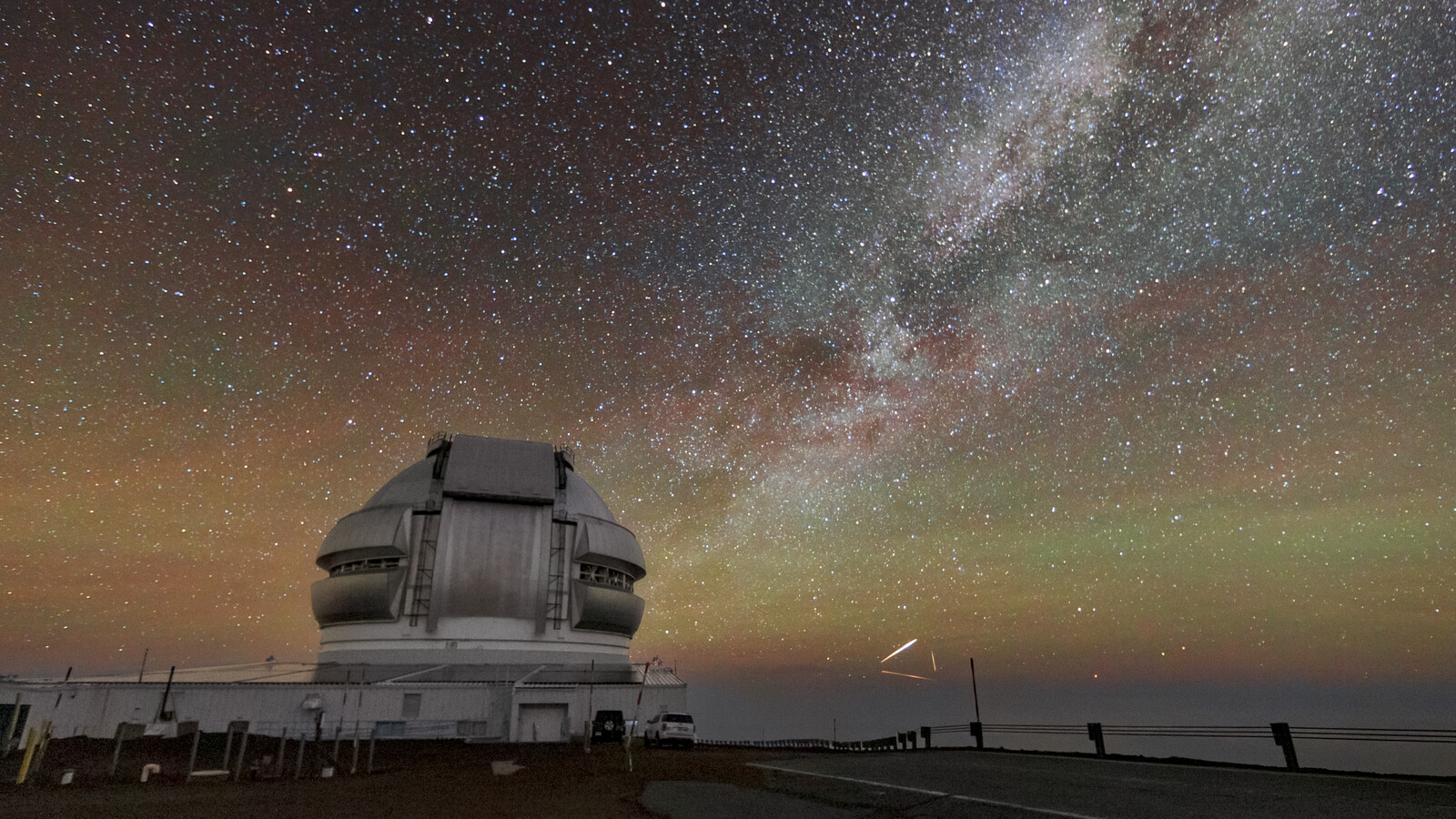Satellites trace a triangle above Gemini North Telescope | Space photo of the day for June 30, 2025
The satellites were seen in the night skies near the summit of Mauna Kea in Hawaii.

The Gemini North Telescope, one half of the International Gemini Observatory, studies the skies above Maunakea, a mountain in Hawaii. Its twin, the Gemini South Telescope, is based in the Chilean Andes at Cerro Pachón.
What is it?
According to NOIRLab, both Gemini Telescopes have four imagers and spectrographs that view in both optical and infrared wavelengths simultaneously, which are mounted on the back of the telescopes. These instruments work in sync with the telescopes' guidance systems in order to be able to look deep into the universe.
The Gemini North Telescope is one of several near the summit of Mauna Kea and it and its twin are two of only a select few observatories that can be operated fully remotely.
Where is it?
At 13,825 feet (4,214 meters) in altitude on a long-dormant volcano, the Gemini North Telescope is above clouds and light pollution that could interfere with its analysis.
Why is it amazing?
While the Gemini North Telescope may be at a high enough elevation to avoid light pollution, it has another issue that might interfere with its readings: satellite streaks. Because there are more satellites in low-Earth orbit than ever before, it can be challenging for astronomers to avoid them when pointing sensors towards the sky. In this image, the long exposure shows three satellites streaking across the sky to form a triangle shape.
Researchers are working to find ways to track these satellites in hopes of making it easier for astronomers to peer into our universe and study the many celestial objects that are there.
Want to learn more?
You can read more about the Gemini Observatory and satellite activity as astronomers continue to use powerful telescopes to look at our night skies.
Breaking space news, the latest updates on rocket launches, skywatching events and more!
Kenna Hughes-Castleberry is the Content Manager at Space.com. Formerly, she was the Science Communicator at JILA, a physics research institute. Kenna is also a freelance science journalist. Her beats include quantum technology, AI, animal intelligence, corvids, and cephalopods.
You must confirm your public display name before commenting
Please logout and then login again, you will then be prompted to enter your display name.

